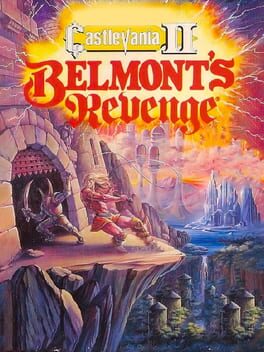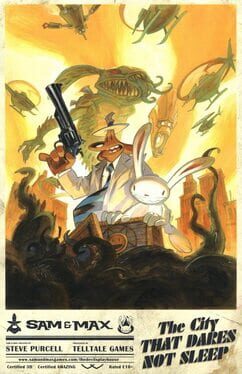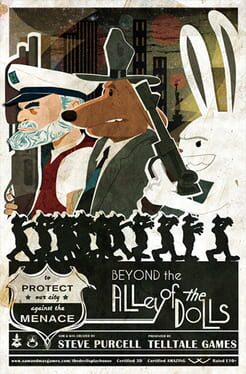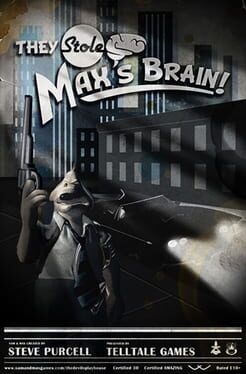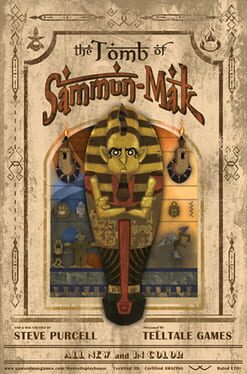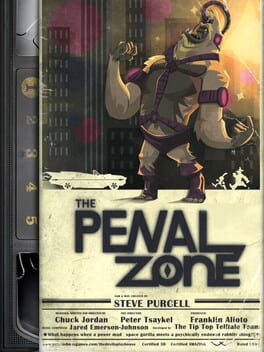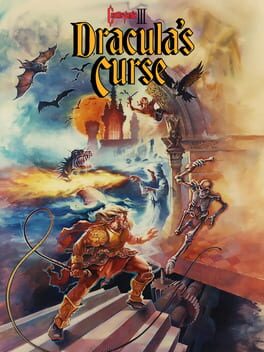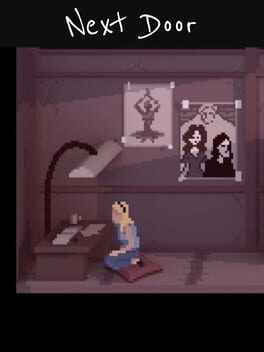Illusionary
Complete playthrough. When it comes to Gameboy interpretations of the Castlevania series, this is much more like it! Controls are much more fluid than The Adventure, there's greater enemy variety, sub-weapons return and the game is somewhere around half as long again, supported by a password system. While still very much a challenging game, it feels somewhat fairer too - except for the final two boss fights, which were a struggle even with save states!
Complete playthrough. Finally, we reach the wrap-up to the last series of Sam & Max's reboot and... well, its appeal was less than I'd hoped. The City that Dares not Sleep focuses on a giantised 'monster' transformation of Max, now terrorising the city. Looking at things from a more objective perspective, this is pretty strong, with an interesting puzzle concept built around controlling each of Max's limbs and good use made of the episode's premise, so my lukewarm feelings towards the episode are probably in large part due to the 'monster' scenario not being a scenario that I find compelling - perhaps unfairly so! The way that the events of prior episodes all draw together here is effective and the variety of new environments is quite impressive - so I'd expect that this finale is likely to have solid general appeal.
Complete playthrough. Honestly, I wasn't as much of a fan of this fourth episode as some of the earlier ones, here focusing on Sam & Max's investigation of an 'army' of clones of Sam. While we see some good use of existing characters and the on-point humour remains, the episode's events and puzzles just weren't particularly compelling to me. There is, however, some good set-up for the final episode to come, helping the overall plot hang nicely together.
Complete playthrough. There's a lot of substance to this episode, divided as it is between two distinct sequences. It would be a spoiler to say too much about each, but suffice to say that there's some really impressive environment design on offer here, with a major focus on an ancient Egyptian theme (episode 2 definitely didn't mark an end to the influence of Sammun-Mac!), though in the latter parts the puzzles each seem to have pretty much the same formula for their solution, becoming disappointingly repetitive. Of course, the arguable key strength of the series in dialogue and writing remains in fine form here, so They Stole Max's Brain! is still a good time to play through - even though the controller-focused controls remain a frustration!
Complete playthrough. With a time-based mechanic underlying much of the puzzle design, The Tomb of Sammun-Mak plays out the events of four separate film reels that the modern-day protagonists find themselves discovering at the end of episode 1, featuring an ancestor of each. Much of the puzzle-solving relies on switching between reels, using knowledge gained from one to tackle obstacles encountered in another - and not necessarily following a forward progression of time. There's very much a feel of certain discoveries acting as the key to make headway in a series of cascading puzzles, where solving the first provides the requirement to solve the next, etc. - making the discovery of that 'key' nicely satisfying, albeit a couple of times being somewhat obscure (not all that unusual for the series!). I'm really enjoying some of the characters that we see introduced and/or developed upon here, each wonderfully characterful, with the series typical fantastic writing once again a highlight.
Complete playthrough. Moving into Sam & Max's third (and final) reboot season from Telltale, we see some nice additional polish at first, with a redesigned menu, etc., but frustratingly, the controls are now very focused on the console release, particularly with movement being with an analogue stick. There's an attempt to simulate that for mouse controls, which is workable, but far from ideal. That complaint aside, this episode maintains the fun story and great writing - and I particularly enjoyed the voice acting for the narrator who now introduces and closes out the episode. There's also a greater diversity of new environments here than we've previously seen, though this does mean that the puzzles can become somewhat more difficult to solve given the greater number of options.
Complete playthrough. Coming from having just played Super Castlevania IV, the limitations of the GB platform really show themselves here - Castlevania: The Adventure, while having a few sequences of quite interesting level design, such as with the third level's spiked raising floor/spiked ceiling sequences, feels very slow and clunky to play. It's also (perhaps mercifully!) very short, with only four levels - albeit the difficulty tends towards series' punishing nature, so I imagine that getting through those levels successfully could take quite a while without the luxury of save states. Ultimately, from a modern perspective this is only really worth playing for historical interest.
1991
Complete playthrough. Moving to the SNES, Super Castlevania IV is a notable step up from the NES games in a number of ways. Controls feel much slicker, particularly with jump patterns being more flexible; aesthetically the large sprites and some impressive graphical effects such as a simulated rotation effect) make the game more attractive and I think that I could detect some additional nuance to the classic soundtrack. Beyond that, the core gameplay mechanics are as solid as ever, though there's not all that much that's new here - combat is still primarily with a whip, while power-ups are directly brought across from the NES game. Arguably it's a case of not trying to change what already works well, but it would be nice at this point to bring in at least a little more variety, particularly with Castlevania III already having given us different characters to control (not seen here).
Complete playthrough. For its final NES instalment, Castlevania III returns to the more traditional style of the first game, taking place as a sequel. The core platforming gameplay remains as solid as ever, though of course with its unforgiving difficulty there's significant potential for frustration too. I'd call this my favourite of the first three games, building nicely as it does on the mechanical variety on offer - in particular, we now see levels containing moving platform elements, increased verticality to level design and a greater overall length, including with multiple paths to choose between.
Completed with all three endings and 100% of achievements unlocked (1,000G). The Procession to Calvary is a medieval-set point-and-click adventure/puzzle game, with a graphical style and silly, absurdist sense of humour very much in the style of classic Monty Python. The puzzle design is solid, not overly obscure and the dialogue is well-written given what it's aiming for, but whether you'll enjoy this will really come down to whether you gel with the Python-esque approach.
Completed with good ending and all items collected. An interesting twist on the platforming gameplay of the first game, Simon's Quest uses the same core mechanics but now sets the adventure within an explorable open world - a clear inspiration for the eventual Igavania/Metroidvania style towards which the franchise later evolved. Playing with a guide, the structure works well, but the puzzle-solving elements of the game are often very obscure, even when various in-game clues offer some assistance.
2021
Complete playthrough. A short horror experience, which sees a young woman, on the way to complain about loud music of another inhabitant of her block of flats, encountering the very strange next-door neighbour of that inhabitant. Lasting only 10-15 minutes, there's little substance to the plot, but the encounters, and excellent, disturbing pixelart animation, raise enough questions that NextDoor is able to make a strong impression all the same.
1986
Complete playthrough. Hallowe'en provided the impetus for me to fill in this gap in my gaming history, with my first time playing through the original Castlevania. While clearly very dated, it's clear why the series has become so successful - the platforming and simple combat gameplay holds up well, though is often unforgiving and becomes very difficult in places (the boss fight against Death in particular). I was very glad to have save states available! Good use of the 8-bit graphics of the time builds a fittingly 'spooky' atmosphere, and of course the soundtrack is superb.
2021
Complete playthrough. A short psychological horror played through following a Discord recommendation, Dispatch focuses on a disturbing emergency report from the perspective of a police dispatcher. It's an interesting idea and quite suspenseful in places, though with gameplay consisting only of selecting between a series of at most two dialogue choices and a 15-minute runtime, there's ultimately not that much substance to it. An ending jump-scare is a bit of an odd inclusion, though I suppose is fitting for the horror genre.
2021
Completed on normal difficulty with 100% of items. Reminding us that it's been far, far too long since the last new Metroid game - let alone in the classic 2D style - Metroid Dread is a triumph, rivalling Super Metroid as the pinnacle of the series. Right from the start, Samus is a joy to control, with smooth, responsive controls, free 360-degree aiming and the return of Samus Returns' counter mechanic, especially now that the game has a full-size controller's functionality available. Level design here is perhaps where the game shines brightest - new setting Planet ZDR is a pleasure to explore, with well-hidden secrets rewarding exploration and a smartly-implemented system of travel between areas seeing earlier areas revisted several times from a new perspective, unlocking new routes as Samus expands her arsenal of weapons and abilities.
Speaking of abilities, Dread sees a good number of wholly new upgrades - and while I'll avoid too much in the way of specifics so as not to spoil, the short-range teleport offered by Flash Shift is particularly notable for its transformative impact on many boss encounters. While we still see some more traditional giant-sized adversaries, equally it's common for boss fights to require full use of arenas and judicious dodging of attacks beyond anything previously seen from the Metroid series - to thrilling, adrenaline-pumping effect. Encounters with the intimidating, near-invulnerable E.M.M.I. robots that have headlined much of the pre-release generate this adrenaline for a different reason, often incredibly tense - and then bringing a sense of triumph when finally defeated.
In terms of aesthetics, Metroid Dread holds up well - environments are nicely detailed, with a nice variety of environments, and strong sound design helping to enhance the sense of tension often generated, especially when encountering E.M.M.I.s and they use their electronic navigation and range-finding tools to hunt down Samus. There's unfortunately not that much in the way of standout new soundtracks, but what new offerings we get fit in nicely. A final note must go to the plot points that the game explores, particularly as this develops in the later stages of the game, culminating in a very satisfying ending reveal to close out this arc of Samus' story.
Speaking of abilities, Dread sees a good number of wholly new upgrades - and while I'll avoid too much in the way of specifics so as not to spoil, the short-range teleport offered by Flash Shift is particularly notable for its transformative impact on many boss encounters. While we still see some more traditional giant-sized adversaries, equally it's common for boss fights to require full use of arenas and judicious dodging of attacks beyond anything previously seen from the Metroid series - to thrilling, adrenaline-pumping effect. Encounters with the intimidating, near-invulnerable E.M.M.I. robots that have headlined much of the pre-release generate this adrenaline for a different reason, often incredibly tense - and then bringing a sense of triumph when finally defeated.
In terms of aesthetics, Metroid Dread holds up well - environments are nicely detailed, with a nice variety of environments, and strong sound design helping to enhance the sense of tension often generated, especially when encountering E.M.M.I.s and they use their electronic navigation and range-finding tools to hunt down Samus. There's unfortunately not that much in the way of standout new soundtracks, but what new offerings we get fit in nicely. A final note must go to the plot points that the game explores, particularly as this develops in the later stages of the game, culminating in a very satisfying ending reveal to close out this arc of Samus' story.
